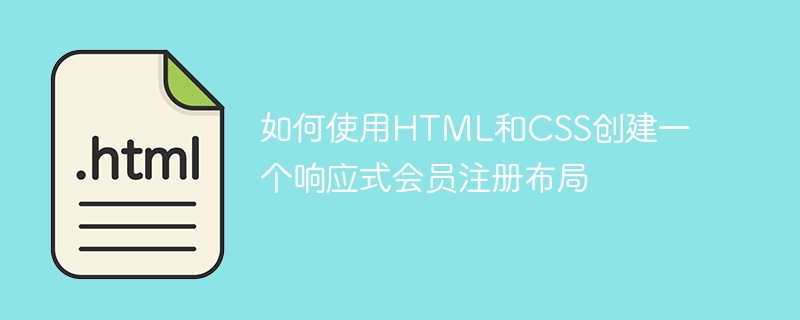

How to create a responsive member registration layout using HTML and CSS
With the popularity of mobile devices, responsive design of websites is becoming more and more important. In order to meet the needs of different device screen sizes, we need to create a member registration page that can adaptively adjust the layout. This article will introduce how to use HTML and CSS to create a responsive membership registration layout and provide specific code examples.
First, we need to create the HTML file, and then add the necessary tags and elements in the file to build the layout.
<!DOCTYPE html>
<html>
<head>
<title>会员注册</title>
<link rel="stylesheet" href="styles.css">
</head>
<body>
<div class="container">
<h2>会员注册</h2>
<form>
<input type="text" placeholder="用户名">
<input type="email" placeholder="邮箱">
<input type="password" placeholder="密码">
<input type="password" placeholder="确认密码">
<button type="submit">注册</button>
</form>
</div>
</body>
</html>In the above code, we create a <div> element as a container for the entire layout, and add a title and a form to the container. Next, we'll use CSS to style this layout.
In order to make the layout responsive, we need to use media queries to add different CSS styles for different screen sizes.
.container {
max-width: 400px;
margin: 0 auto;
padding: 20px;
}
h2 {
text-align: center;
}
input, button {
display: block;
width: 100%;
margin-bottom: 10px;
padding: 10px;
}
button {
background-color: #000;
color: #fff;
border: none;
}
@media (min-width: 768px) {
.container {
max-width: 600px;
}
}In the above code, we set the maximum width of the container to 400px, set the center alignment, and defined the styles of the title, form input box, and button. In the media query, we change the maximum width of the container to 600px to accommodate larger screen sizes.
Save the above HTML and CSS codes and save them as index.html and styles.cssdocument. Then open the index.html file using any modern browser and you will see a basic responsive membership registration layout.
You can further customize the style and layout as needed. For example, you can add background images, change input box styles, change button styles, and more.
Summary
This article introduces how to use HTML and CSS to create a responsive membership registration layout. By using media queries and appropriate styling, we are able to provide an appropriate layout for different screen sizes. I hope this article helped you understand how to create responsive layouts.
The above is the detailed content of How to create a responsive membership registration layout using HTML and CSS. For more information, please follow other related articles on the PHP Chinese website!